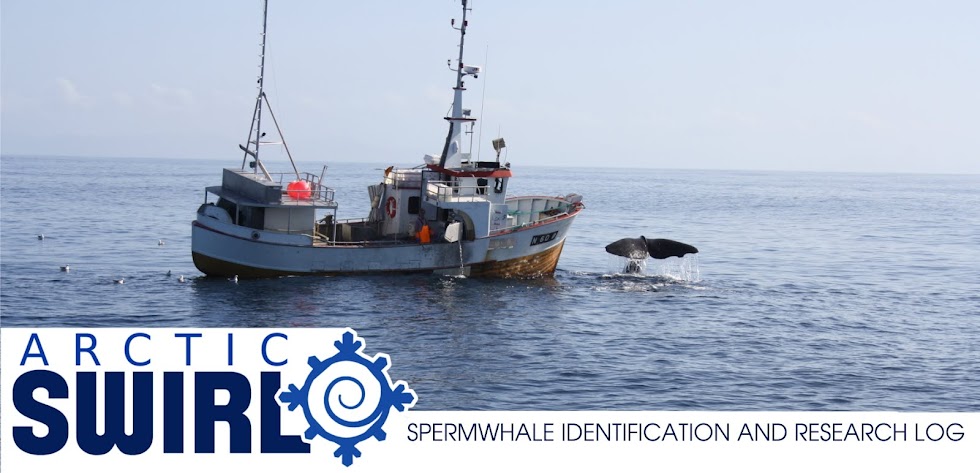The Greenland Halibut fishing has
ceased for a six week period and will commence again on July 25th.
The increase in sightings of spermwhale depredation behaviour in our study area increased dramatically during the last week of the fishery. The escalation made headline news in the Norwegian media (here). The whales were foraging up to 50% of the catch in the most
recent encounters.
The solution to this situation is not
arriving in a hurry and as for now, we will analyze the collected
data (identity and numbers of sperm whales, summary of number and location of depredation events, estimates of catch loss). Thanks to fishermen and whale-watch operations and the owners of MV "Brandaris" we have a wealth of information. We are hoping to have some ideas for solutions that we could try out already in the next fishing season. Our longterm plan is to create a larger project that includes scientists who have worked with depredation in other parts of the world and together with fishermen try to find good mitigation solutions to the problem.
We are very grateful to all those who have contributed to our work so far. It has been an exciting three weeks and we are surprised to find the scale this problem has escalated to in such a short time. We are looking forward to our new field season starting in late July and in the mean time update the log with our findings so far.
Sperm whale diving to the longline of "Egilsson"
The project has got quite a lot of media coverage the past weeks, which has proven useful. We have received more information from fishermen participating in longline fishery, including reports dating back 30 years (!) of sperm whales depredating from the lines. The older reports from Norwegian coastal waters are all further north of our study area, in fishing grounds called "Tromsøflaket". In this area majority of fishing vessels are much larger, automatic longliners than the smaller fleet we have cooperated with off Vesterålen islands (in Langenesegga). We are not sure why depredation events have not previously been reported from Tromsøflaket (and when we asked the fishermens union in april about possible depredation in these waters the reply was "no whales have been observed around longliners"). The lack of reports could, sadly enough, represent
the ever growing gap between fishermen and scientists. However, now we know
that we should expand our study area and get cooperation going on with this
fleet as well.
The fishing grouds of Tromsøflaket.
The fishing grouds of Tromsøflaket.
11th og June sperm whales were taking fish from longlines on a fishing ground (Hesteskoen)further
south towards the Lofoten islands, and the fishermen who reported this told
me they have not seen this behavior before – so yes, depredation behavior is
spreading.
Our "main operator", seen around longliners in Langenesegga since 2014
We are very grateful to all those who have contributed to our work so far. It has been an exciting three weeks and we are surprised to find the scale this problem has escalated to in such a short time. We are looking forward to our new field season starting in late July and in the mean time update the log with our findings so far.
Tiu and Tom assessing the situation.
















